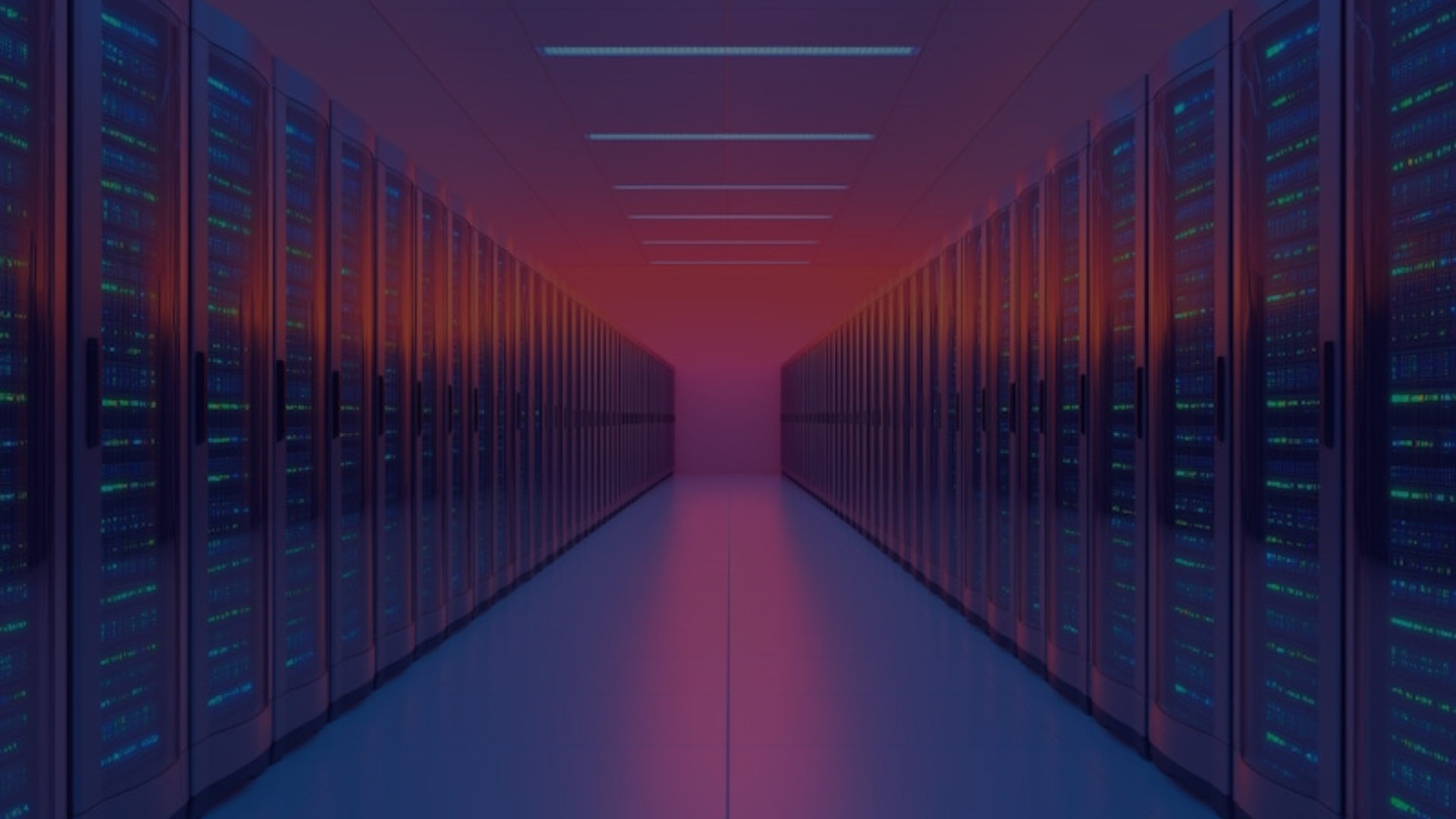
The era of the EX Super Team
Remember when employee experience was everyone's job but no one's responsibility? When HR, Internal Communications, and IT operated like separate planets in the same solar system? Well, 2024 changed all that. This isn't just another year of incremental change, 2025 marks a fundamental shift in how we approach employee experience. So, for the first time ever, we're breaking tradition and creating one unified trends outlook. How do Internal Communication Trends, HR Trends, and IT Trends fit into the bigger picture? Here's what's reshaping our workplaces in 2025 and beyond.
Trend 1: The organizational velocity imperative
Is employee engagement - that holy grail metric we've chased for decades - actually holding everyone back? At Unite 24, we confronted an uncomfortable truth: while HR and Internal Communications have been measuring engagement, the rest of the business has been crying out for speed, agility, and better ways of working.
Unily CEO Chris Ciauri opened Unite 24 with a statement that initially raised eyebrows: "Employee engagement is not enough." In today's volatile business landscape, engagement has become a narrow lens that keeps EX initiatives siloed within HR and Communications. What organizations really need is Organizational Velocity.
Think about it - engagement has traditionally been HR and Internal Communications territory, leaving IT, Operations, and other functions on the sidelines of the employee experience conversation. Meanwhile, the world has changed dramatically. Market conditions shift overnight, innovation cycles keep getting shorter, and competition comes from unexpected directions.
"If I'm an employee, will I ever ask myself if I'm feeling engaged? No! I mostly want my job to become easier, the output to be better, and connections to be stronger."
Chris Ciauri, Chief Executive Officer at Unily
This is where Organizational Velocity changes the game. Instead of being another HR metric, it provides a framework that unites every function around a common goal. IT can focus on reducing technical friction, Operations can streamline processes, HR can build adaptable teams, and Communications can enable faster information flow. Everyone has a role to play in building a faster, more adaptable organization.
"I don't think I remember a time where we've seen—and needed—so much wholesale transformation of the work experience," reflects Hattie Roche, Strategy Partner at Fauna. "Whether it's changing expectations or technological revolution, organizations need to move more quickly than ever before. If we want to see adaptability, change-ready teams and speedy decision-making we need to design employee experiences that enable that sort of velocity. While employee engagement has always been a critical part of the equation, it became clear that there was a missing piece. Organizational Velocity speaks directly to the current state of the enterprise, creating the conditions needed to stay ahead in an evolving landscape."
2025 is the year we break down the walls around employee experience. While engagement metrics will always have their place, Velocity gives every function a seat at the EX table. It moves the conversation from "how do people feel?" to "how effectively can our organization move?" which will ultimately satisfy employees though a better workplace and better results.
Unite 23 - Unily: The future
Get an exclusive first-look at Unily’s next big innovation and hear how we’re evolving our product to meet emerging enterprise needs.
Watch nowWhat this means for the EX Super Team
For Internal Communications teams, this means shifting focus from engagement messaging to velocity enablement. Instead of just measuring message reach, you'll need to track how quickly information flows through your organization and turns into action.
HR leaders will need to evolve their thinking too. Traditional engagement surveys might tell you how people feel, but velocity metrics show you how effectively they can move and adapt. It's time to reward adaptability alongside engagement.
For IT leaders, this is your moment to shine. The technology stack you build isn't just about features and functionality anymore—it’s about reducing friction and enabling speed at scale. Every tool should be evaluated not just for its capabilities but for how it enables Organizational Velocity.
The path to Organizational Velocity is an ongoing journey, but as we move forward, one thing is clear: the future belongs to organizations that can adapt and move at speed and employees that make it happen.
Full title of the video
Longer intro text to the webinar or video. These are gated assets so use more text to create a larger call to action. Lorem ipsum dolor sit amet consectetur tincidunt aliquam. Nemo enim ipsam voluptatem quia voluptas sit aspernatur aut odit aut fugit sed.
Watch nowTrend 2: Mind the AI Gap
AI has been in its gold rush era, with everyone rushing to test out the newest generative AI tool, spin up AI products, and collectively rue or embrace humanity’s next phase. In reality, AI has yet to have the big impact that everyone is waiting for. So, what comes next?
2025 is the year the AI wheat gets separated from the chaff - shiny new object syndrome is out, and real-world impact is in.
What does this mean for Employee Experience? A gap is emerging. On one side, we have companies who have spent the last few years strategically embedding AI in their workflows, systems, products, and governance. And on the other side, companies that have treated AI like an afterthought, a distraction, or a distant dream.
The AI reality check
The AI revolution is here, but are your organization and your employees ready to thrive? Sharpen your strategy with the latest data.

This gap is mirrored on the employee side of the equation. In the absence of clear policies and communication, a two-speed workforce is beginning to appear. A cohort of early adopters powers ahead to unlock significant productivity gains, while resistant counterparts continue with old ways of working, waiting for further instruction from leadership. A workforce already struggling with fragmentation becomes more fractured without clear top-down direction. The result? Unrealized productivity gains, growing misalignment, security and compliance blind spots, and the potential loss of talent as the most AI-advanced workers search out more digitally mature employers.
Organizations that wish to lead the AI revolution should focus on three areas: 1) clearly communicating a compelling vision 2) selecting the right partners to ensure strong governance 3) integrating AI into the workflow for optimal impact.
Everyone in the EX super team has a role to play in unlocking the potential of AI for workplace reform.
For IT leaders, the time to create and communicate a clear AI governance framework is now, or risk shadow AI flourishing further. Competitive advantage lies in enabling safe, strategic AI adoption interwoven into the digital estate and daily workflow, not bolted on with new tools.
HR leaders must consider how AI will reshape the workforce, from new skillsets needed to what impact the introduction of skilled digital agents will have on traditional career progression paths. If AI can quickly expedite work historically undertaken by junior employees, what does this mean for skill development among the next wave of talent? HR teams must work closely with IT to develop policies and transformation strategies that work in tandem, ensuring the organization is structurally prepared to embrace new opportunities.
Meanwhile, Internal Communications teams find themselves at the heart of this transformation. The AI skill gap is creating new communication challenges that need targeted campaigns. Employee awareness and understanding of company AI policy needs to be first priority. Beyond that, the success of AI in your enterprise will heavily rely on how well IC can translate AI benefits into everyday language and create a culture that celebrates new ways of working.
The organizations pulling ahead aren't just throwing AI tools at problems – they're creating ecosystems where different AI capabilities work together seamlessly. They're combining large language models with specialized AI tools, creating workflows that multiply human potential rather than just automating tasks.
The question for 2025 isn't whether to adopt AI—that ship has sailed. The real question is, how quickly can you close the gap before it becomes an unbridgeable chasm?
AI in the workplace
What does AI in the workplace look like today? How do we ensure its use is properly governed within our organizations? Where are the opportunities? And what might the future of AI in the workplace look like?
Learn more
Trend 3: Burnout or bust - The well-being wake-up call
Just when we thought we'd weathered the worst of the pandemic storm, a more insidious crisis is brewing in our workplaces. According to Gallup, in 2024, 44% of employees experience significant daily stress at work – a record high. At Unite 24, former Google X Chief Business Officer Mo Gawdat dropped a truth bomb that's still reverberating: "Employers are not responsible for employee happiness, but they are responsible for removing what is making them unhappy."
The numbers paint a startling picture. CIPD research reveals UK employees took an average of 7.8 sick days in 2023 – a dramatic jump from the pre-pandemic average of 5.8 days. The story repeats across the Atlantic, with 17% of US adults logging six or more sick days last year, up from 11% in 2020.
But this isn't just about physical illness. We're witnessing the culmination of years of accumulated workplace stress, digital overwhelm, and corporate culture challenges. The digital noise epidemic is real—our research found 59% of employees reporting that digital noise adds to their workplace stress, skyrocketing to 71% for managers.
HR leaders are realizing that traditional wellness programs aren't cutting it anymore. Mental health support needs to move beyond tick-box exercises to proactively monitor how leadership and culture impact wellbeing. The way organizations navigate workplace changes, especially return-to-office mandates, will be critical to reduce employee stress.
In 2025, IT leaders have a magnified role to play in employee well-being. Digital overwhelm is a technical debt that's coming due. Organizations must intentionally design seamless, user-friendly digital environments that align with employees' evolving expectations. Tool sprawl needs to cool off—it’s actively contributing to cognitive overload.
For Internal Communications teams, the challenge is creating a communication culture mindful of people's preferences and styles. Look at your own communications. Are you part of the solution or part of the problem? Creating simpler, more intentional channel strategies and investing in fewer but higher quality communications with more specific audiences can reduce overall noise. Remember, stress reduction isn't about more wellness resources, it's about less noise.
The real competitive advantage in 2025 won't be who can push their employees the hardest, it will be who can create an environment where sustainable high performance is possible.
The question isn't whether to address burnout anymore. It's how quickly you can transform your workplace into one that energizes rather than exhausts. Because in 2025, it's burnout or bust.
Distracted every 15 minutes: The impact of digital noise in the workplace
In today’s information and communication rich digital workspace, interruptions are part and parcel of the job. However, this cacophony of noise disrupts the focus of one in three workers every 15 minutes or less. Uncover the impact of digital noise in your workplace and learn about the benefits of a unified comms approach.
Get the reportTrend 4: Reinstating connectivity as the power source of the enterprise
Remember when 3G felt fast? When connecting to your company's intranet from home was a luxury? As we've evolved from 3G to 5G, our expectations of connectivity have transformed. But here's the thing—while our personal tech keeps advancing, many enterprises are stuck in the past when it comes to connection in the modern workplace.
The way we work has fundamentally changed.
Hybrid teams collaborate across continents, real-time data powers decision-making, and rich media experiences are the norm, not the exception. Yet many organizations are trying to power these modern workloads with outdated methods of connection and collaboration. It's like trying to run Netflix on a dial-up connection—technically possible, but painfully slow.
The most forward-thinking enterprises aren't just upgrading their technology – they're completely reimagining human connection at work. They understand that connectivity isn't just about chatting and calling over Microsoft Teams or Slack; it's about breaking down every barrier that stands between employees and authentic collaboration.
From digital infrastructure to Human Connection
Technical connectivity for all employees is just the beginning of this trend, but the real organizational power comes from connecting:
- Teams across silos and geographies
- Ideas across departments and hierarchies
- Data across disparate systems and processes
- People across cultural and linguistic boundaries
When breaks in these connections occur—whether technical, cultural, or organizational—the entire system slows down. In 2025, the most successful organizations will be those that treat human connectivity as their power source and look for a new blueprint for connection in the enterprise.
Time for a connection revolution
The message is clear: traditional approaches to workplace connection won't power tomorrow's success. It's time to:
- Replace legacy systems that create bottlenecks and inhibit human connection
- Embrace casual audio and video content for natural, asynchronous conversations that feel more human
- Foster deeper connections by understanding personality profiles, communication preferences, and individual competencies
- Create environments where authentic relationships flourish, leading to work that carries the unique stamp of genuine collaboration
Because in 2025, connectivity isn't just about video calls or chat channels—it's about creating the conditions for human ingenuity to power the future of work.
Strategies for achieving connection and alignment across a frontline workforce
Struggling to connect and align with your frontline workforce? Discover enterprise-grade strategies to boost productivity and drive organizational velocity in complex, hyper-distributed environments.
Learn moreTrend 5: The heroic rise of the EX Super Team
The numbers don't lie—employee experience needs a reset. According to Gallup, despite minor improvements since 2020's historic decline, only 23% of the global workforce is engaged. The cost? A staggering $8.8 trillion hit to the global economy. When 6 in 10 employees are just showing up for the paycheck, it's clear that fragmented approaches to employee experience aren't cutting it.
Enter the EX Super Team—a strategic evolution that's rapidly becoming the gold standard for enterprises serious about employee experience. This isn't just another committee; it's a powerful convergence of HR's people-first approach, Internal Communication's engagement expertise, and IT's technical innovation.
Josh Bersin notes that employee experience is no longer an HR project, it's business transformation that requires expertise from IT, HR, facilities, and other business leaders. Looking at our key stakeholders and the challenges top of mind for them, collaboration isn't just beneficial – it's essential for progress.
The smartest organizations are recognizing that these challenges don't exist in isolation. They're establishing dedicated EX roles that sit at the intersection of all three functions, creating a bridge between technical capabilities, human needs, and communication requirements. These EX-architects are becoming the connective tissue that ensures initiatives deliver on all fronts.
What does this look like in practice? It starts with joint objectives and measurement—moving beyond departmental KPIs to shared employee experience metrics. It requires a unified technology strategy ensuring platforms serve all stakeholders' needs. Most importantly, it demands regular cross-functional innovation sessions where each function contributes their expertise.
At Unite 24, 500 enterprise EX leaders gathered to discuss exactly this kind of collaboration, with real examples of HR, IC, and IT functions coming together to solve complex employee experience challenges. The message was clear: the future belongs to those who can transcend their functional expertise.
Is your organization ready to make this leap? The first step is acknowledging that no single function can own the employee experience. The second is bringing your brightest minds together in a formalized structure that encourages collaboration over competition. Those who get this right in 2025 will set the standard for years to come.
Make 2025 your year of transformation
Talk to us about how Unily can support your enterprise employee experience goals.
Take 2025 by storm
Discover how Unily is supporting Internal Comms leaders from the world’s largest enterprises to maximize Organizational Velocity.

Having spent 10 years immersed in the employee experience space, Kaz has a reputation for being a thought leader with a cutting-edge stance on the latest industry trends and predictions. His experience rolling out more than 20 intranets to over a million employees means he has on-the-ground knowledge and data to back up his innovative perspectives - and he is not afraid to challenge the status quo. Kaz joined Unily in 2018 and is now a regular speaker at industry events including Unily's Unite - the #1 employee experience conference.

Since joining Unily in 2018, Casey has been shaping the company’s voice and messaging, helping to define how Unily communicates with the world. As Senior Manager, Brand and Communications, she focuses on crafting compelling narratives, developing strategic content, and ensuring Unily’s thought leadership stands out. Whether through insightful research, engaging event talk tracks, or brand storytelling, Casey is passionate about creating content that resonates.